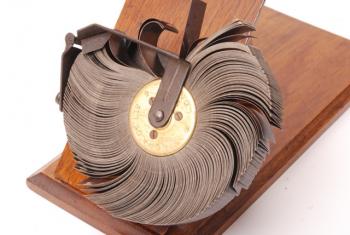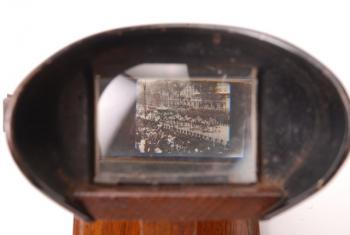In response to the popular reception of the digitisation of 1901 footage of legendary cricketers KS Ranjitsinhji and CB Fry, the NFSA has purchased an English Kinora, manufactured by Bond & Co. in 1901, and five kinora reels. The original mechanical technology has a beauty and simplicity that is immensely attractive.








